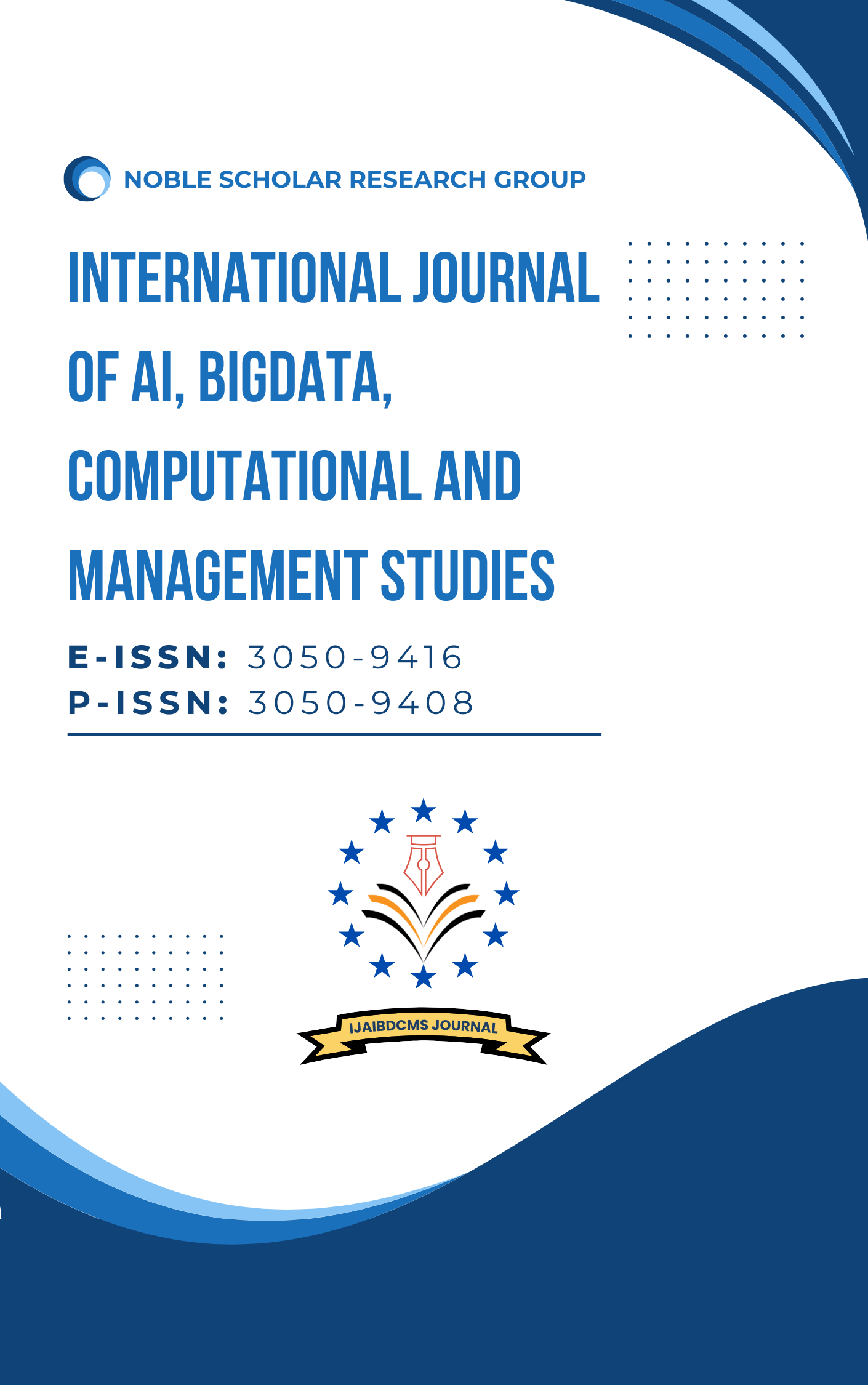Artificial Intelligence in Cloud Computing: Building Intelligent, Distributed, and Fault-Tolerant Systems
DOI:
https://doi.org/10.63282/3050-9416.IJAIBDCMS-V3I1P105Keywords:
Artificial Intelligence, Cloud Computing, Machine Learning, Fault Tolerance, Deep Learning, Security, OptimizationAbstract
Cloud computing has brought about a paradigm shift in organisations utilising and allocating computation services using the internet. The integrated technology of Artificial Intelligence (AI) into cloud computing increases the efficiency, reliability, intelligence and self-managing of cloud computing environments. This paper seeks to give an assessment of AI in cloud computing especially in aspects of its contribution in regard to resource management, security, scalability and elasticity of the system. Several AI processing methods, such as ML, DL, and RL, enhance cloud services in terms of intelligent distributed computing. Also, this paper presents different fault-tolerant techniques that help in self-diagnosis and prevention of system failure before they occur. The current AI solutions and the proposed integrated enhanced distributed computing environment are investigated and analysed through a literature review and experimentation. It also discusses actual applications and cases to illustrate the use or incorporation of AI in cloud computing. Based on the studies, integrating AI into cloud computing enhances the performance and efficiency of ICT and has a significant role in building self-healing and self-managing cloud environments. Lastly, the paper discusses the further work to be done and the issues related to incorporating AI in cloud computing, addressing the security, ethical concerns, and transparency of the self-learning systems
References
1. Armbrust, M., Fox, A., Griffith, R., Joseph, A. D., Katz, R., Konwinski, A., ... & Zaharia, M. (2010). A view of cloud computing. Communications of the ACM, 53(4), 50-58.
2. Mell, P., & Grance, T. (2011). The NIST definition of cloud computing.
3. Marinos, A., & Briscoe, G. (2009). Community cloud computing. In Cloud Computing: First International Conference, CloudCom 2009, Beijing, China, December 1-4, 2009. Proceedings 1 (pp. 472-484). Springer Berlin Heidelberg.
4. Zhang, Q., Cheng, L., & Boutaba, R. (2010). Cloud computing: state-of-the-art and research challenges. Journal of internet services and applications, 1, 7-18.
5. Chen, Y., Paxson, V., & Katz, R. H. (2010). What’s new about cloud computing security? University of California, Berkeley Report No. UCB/EECS-2010-5 January 20(2010), 2010-5.
6. LeCun, Y., Bengio, Y., & Hinton, G. (2015). Deep learning. nature, 521(7553), 436-444.
7. Schmidhuber, J. (2015). Deep learning in neural networks: An overview. Neural networks, 61, 85-117.
8. Sutskever, I., Vinyals, O., & Le, Q. V. (2014). Sequence to sequence learning with neural networks. Advances in neural information processing systems, 27.
9. Sutton, R. S., & Barto, A. G. (1998). Reinforcement learning: An introduction (Vol. 1, No. 1, pp. 9-11). Cambridge: MIT Press.
10. Dean, J., & Ghemawat, S. (2008). MapReduce: simplified data processing on large clusters. Communications of the ACM, 51(1), 107-113.
11. Mukwevho, M. A., & Celik, T. (2018). Toward a smart cloud: A review of fault-tolerance methods in cloud systems. IEEE Transactions on Services Computing, 14(2), 589-605.
12. Belgaum, M. R., Alansari, Z., Musa, S., Alam, M. M., & Mazliham, M. S. (2021). Role of artificial intelligence in cloud computing, IoT and SDN: Reliability and scalability issues. International Journal of Electrical and Computer Engineering, 11(5), 4458.
13. Hooda, S., Lamba, V., & Kaur, A. (2021, October). A systematic review of AI and soft computing techniques for securing cloud and edge computing. In 2021 5th International Conference on Information Systems and Computer Networks (ISCON) (pp. 1-5). IEEE.
14. R. Daruvuri, “An improved AI framework for automating data analysis,” World Journal of Advanced Research and Reviews, vol. 13, no. 1, pp. 863–866, Jan. 2022, doi: 10.30574/wjarr.2022.13.1.0749.
15. Rajan, A. P. (2013). Evolution of cloud storage as cloud computing infrastructure service. arXiv preprint arXiv:1308.1303.
16. Agarwal, A., Siddharth, S., & Bansal, P. (2016, March). Evolution of cloud computing and related security concerns. In 2016 Symposium on Colossal Data Analysis and Networking (CDAN) (pp. 1-9). IEEE.
17. Ramamoorthi, V. (2021). AI-Driven Cloud Resource Optimization Framework for Real-Time Allocation. Journal of Advanced Computing Systems, 1(1), 8-15.
18. Qureshi, K. N., Jeon, G., & Piccialli, F. (2021). Anomaly detection and trust authority in artificial intelligence and cloud computing. Computer Networks, 184, 107647.
19. El Khatib, M. M., Al-Nakeeb, A., & Ahmed, G. (2019). Integration of cloud computing with artificial intelligence and Its impact on telecom sector—A case study. IBusiness, 11(01), 1.
20. Sun, L., Jiang, X., Ren, H., & Guo, Y. (2020). Edge-cloud computing and artificial intelligence in the internet of medical things: architecture, technology and application. IEEE Access, 8, 101079-101092.
21. Radford, B. J., Apolonio, L. M., Trias, A. J., & Simpson, J. A. (2018). Network traffic anomaly detection using recurrent neural networks. arXiv preprint arXiv:1803.10769.



